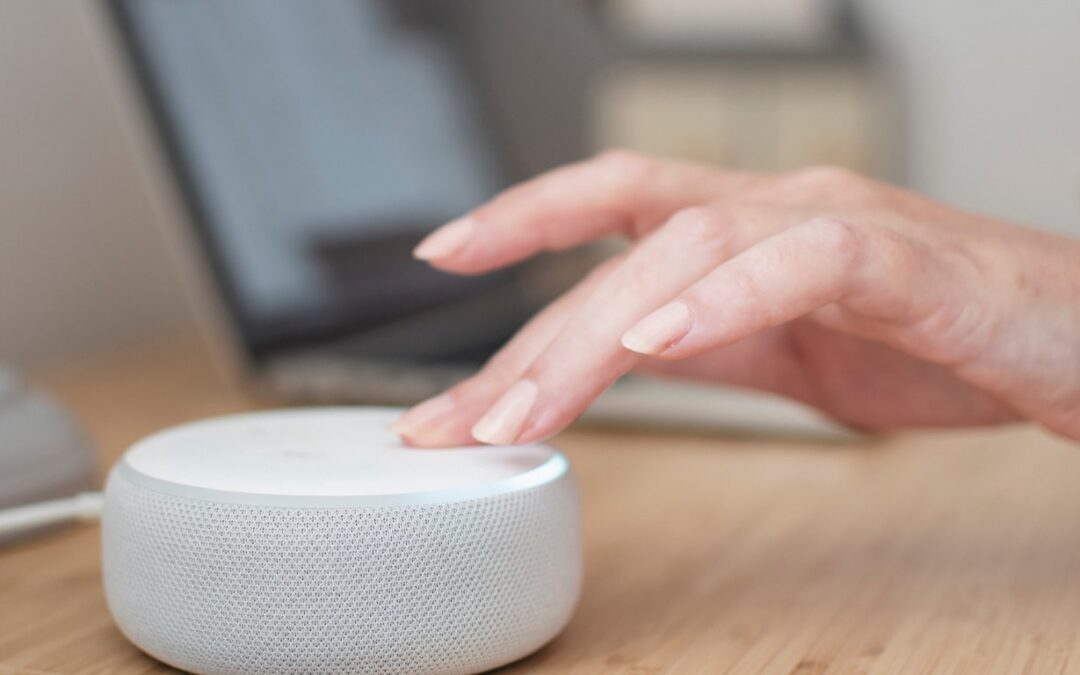Two challenges may seniors find themselves struggling with are isolation and safety. Both can have serious impacts, including physical, emotional, and mental ones. This is especially true for those who have limited mobility. They may not be able to visit family or friends without help, and they are often at greater risk of falling and getting hurt.
Fortunately, technology has progressed to a point where it can help with both of these issues. Assistive technology has become more and more useful in the home to help seniors with feeling less isolated, staying safe, and increasing their independence. These tools and devices can play a major role in your loved one’s life, even those who say they’re technologically challenged and could never learn how to use one. Today’s assistive technology has been designed with accessibility in mind, and the team here at Reliant Home Care Services is also on hand to teach seniors and their loved ones how to integrate these devices into their lives quickly and easily.
Understanding Assistive Technology
Assistive technology is any type of technology that helps seniors remain safe and independent. It includes devices such as smartphones and virtual assistances, tools such as automatic lights, and systems such as integrated health trackers that send data to their health team. Thanks to progression in technology and manufacturing, many of these devices are available to seniors for reasonable prices, making it easier than ever to incorporate them into the home.
The main goal of assistive technology is to provide seniors with the extra help they need to accomplish tasks. For example, a virtual assistant can make it easier to call loved ones or call for help. It can also answer basic questions and do tasks such as turn on lights or set reminders. Wearable technology can automatically detect falls and call for help or monitor certain health conditions. Automatic lighting turns on as soon as someone enters the room, helping them avoid tripping hazards and other low-light risks.
All of these devices aim to keep your loved one safe and comfortable in their own home. Most are very accessible to those with even the lowest comfort with technology. Even if you’re uncertain how to set up these devices, the care team here at Reliant can help. We can assist you with integrating technology into your loved one’s daily routine in order to boost their independence and safety.
Mobility Aids: Regaining Freedom and Independence
Many seniors deal with mobility challenges. Whether it’s a slight stiffness in their knees or serious arthritis in the hips, these mobility issues can make it much more difficult for someone to enjoy their hobbies or even go visit their friends. Some may even have trouble getting up out of bed by themselves. Fortunately, there are mobility aids that can help with these issues.
The first type of mobility device may seem old-fashioned, but canes and basic walkers still have their place in helping seniors keep their balance. Today’s canes are more stable and durable than older options, though, and there are many lightweight options available. Wheelchairs have also gone through an upgrade. Today’s electric wheelchairs are much more affordable than they once were, and they’re much easier to use and transport.
In the home, additions such as a stairlift can help those who live in a two-story home gain access to the second floor. Adding ramps, including folding ramps, can help with exterior access. Grab bars can assist seniors with getting up, as can powered recliners that raise up and tip forward at the press of a button.
Communication Devices: Staying Connected and Engaged
Communication is vital for elderly individuals. They must have some way of letting others know when they need help, especially if they fall or hurt themselves in any way. Unfortunately, many seniors struggle with hearing loss, speech difficulties, and trouble remembering phone numbers or how to call for help. Technology does help with these issues, especially voice-controlled technology. If your loved one falls, they can ask Google, Siri, Alexa, or one of the other devices to call for assistance. Many of these devices can also be trained to someone’s voice and speech mannerisms so even those who do have speech difficulty may be able to use them.
Today’s phones, headphones, and hearing aids have also been designed to help with safety. Hearing aids can be paired with cell phones via Bluetooth connection to make it easier to hear during calls while simultaneously blocking out more background noise and other distracting sounds. Speech to text and text to speech software also helps facilitate communication.
Video calls, including telehealth, make it much easier for loved ones to talk to their care team at any point. While they may see their in-home caregiver regularly, that’s not the same as talking to a doctor or a specialist. Telehealth visits make it simple for your loved one to discuss their concerns with a doctor without ever leaving their home. Of course, there are times when a video call isn’t enough to diagnose or treat a health condition, but it can greatly help.
Adaptive Equipment for Daily Living
As seniors age, their needs are going to change. Technology that once was incredibly helpful may no longer be enough. This is why it’s important to have an idea of what other technology is available and how that technology can be introduced to your loved one. For example, your loved one may not need hearing aids right now, but they might become necessary in a few years. Adapting new equipment may not be in response to a gradual change, either. A sudden fall can decrease your loved one’s mobility, making things such as grab bars and ramps suddenly necessary.
Fortunately, there are many different types of equipment that can be used to help your loved one with daily living. Some of these aren’t that high-tech. Grab bars, bright LED bulbs, and raised toilet seats, for example, aren’t what most people would consider technology, but they are equipment that can help your loved one stay independent and safe.
Integrating Assistive Technology with Home Care
How do you begin integrating this assistive technology into your loved one’s home care program? The first step is to talk to your loved one about the changes you want to make. You need them to be fully onboard with these changes, or at least recognize their value, or you run the risk of them not using these tools. Reliant’s team can help you with this conversation and with teaching your loved one how to use assistive technology. Since we’ll be there regularly, we can keep an eye on how they’re using these tools, provide help when needed, and gently remind them that this equipment is available.
We can also let you know when it seems like your loved one’s needs have changed. We can recommend new technology to address challenges that have arose over time. Again, we’ll be here to help you integrate this technology into your loved one’s care program and teach them how to make the most of it.
Reach Out to Reliant Today to Learn More About Assistive Technology
Assistive technology, whether it’s something basic such as grab bars and brighter lighting or more advanced equipment such as virtual assistants and telehealth visits, can make your loved one’s life so much easier. With the right assistive technology and a personalize in-home care plan from Reliant, your loved one will be able to remain independent and safe in the home they love.
Contact Reliant today to learn more about assistive technology and how our personalized home care solutions can keep your loved one independent and safe.




